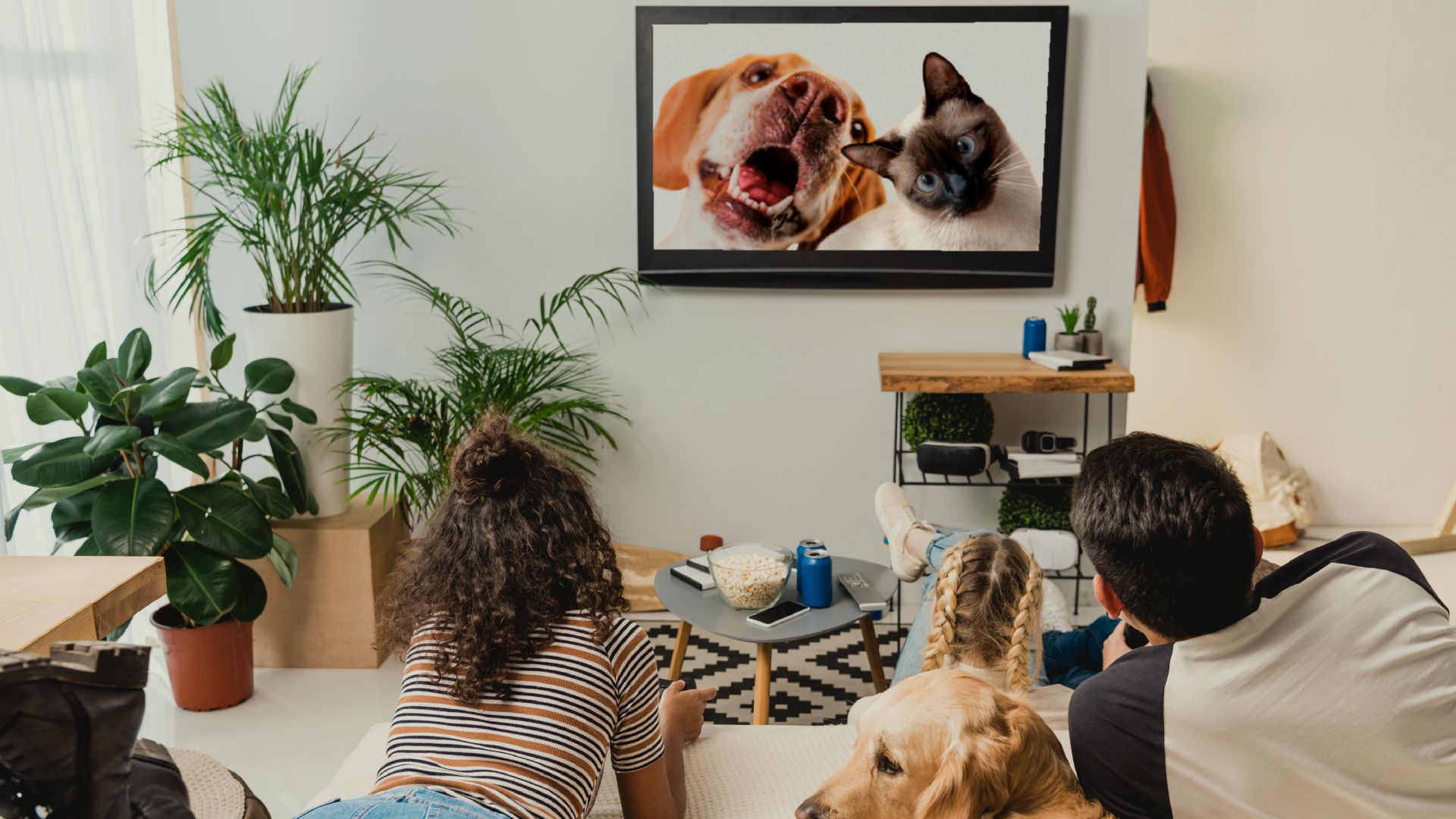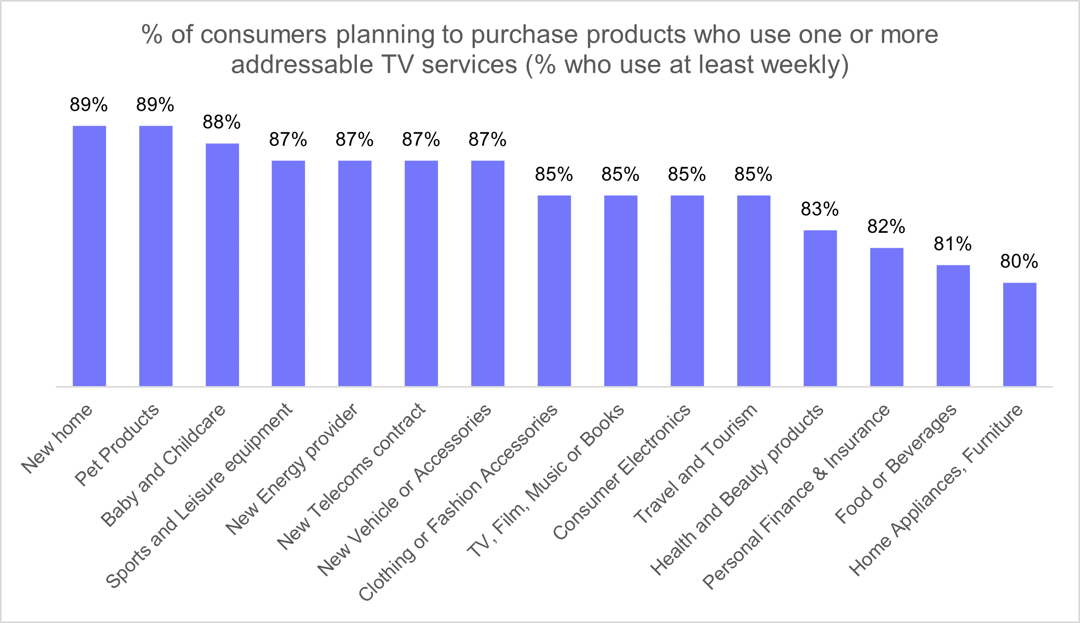From automotive to pet products: Leveraging addressable TV for all categories

With the proliferation of addressable TV in developed markets, most internet users regularly. Ad-supported video-on-demand (AVoD) and free ad-supported streaming TV (FAST) platforms such as Pluto TV, Tubi, Samsung TV+ and YouTube are particularly expansive, collectively reaching 90% of internet users each month in markets like the US, UK, Australia or Germany. The growing maturity of addressable TV means that there is an opportunity for brands to not only reach large audiences but also maximise the use of addressable TV’s unique targeting features and interactive or shoppable formats.
 Source: Consumer survey of 8,000 18-64 year olds in USA, UK, Germany, Australia
Source: Consumer survey of 8,000 18-64 year olds in USA, UK, Germany, Australia
Thanks to their near-universal reach in markets with high broadband penetration, addressable TV products are relevant to most advertisers, including brands from major spend categories such as Automotive, Personal Finance, Health & Beauty, Retail and others. Among consumers looking to purchase products across major categories, such as Automotive and Baby & Children’s goods, addressable TV services reach an average of prospective customers each week.
The specific services that advertisers can rely on to deliver that reach will vary across markets. In the US, a mix of pure-play AVoD services like Pluto, Samsung TV+, Roku (as well as hybrid products like Hulu), complemented by YouTube, will deliver maximum reach for most categories. Yet while AVoD services like Pluto TV and Samsung TV+ are available in markets like the UK and Australia, consumers in these markets also frequently engage with broadcaster-owned video-on-demand (BVoD) platforms such as the UK’s ITVX or Australia’s 7plus, which advertisers should factor into media planning.
BVoD services in the UK and Australia are used by nearly three-quarters of all consumers looking to buy Automotive, Personal Finance and Childcare & Baby products. Specifically, there are between 15-17% of potential buyers for these categories that use BVoD and not AVoD platforms. This suggests that in the UK and Australia, brands should use a mixture of addressable TV platforms to maximise their reach.
 Source: Consumer survey of 8,000 18–64-year-olds in US, UK, Germany, Australia
Source: Consumer survey of 8,000 18–64-year-olds in US, UK, Germany, Australia
Addressable TV enables brands to experiment with creatives. One of the advantages of using addressable TV products is the ability to personalise the content that audiences see, and there is a strong desire from certain buyer categories for this. In fact, on average, just over two-thirds of consumers looking to purchase within Automotive, Personal Finance, Beauty & Health or Childcare & Baby categories would be interested in advertising that is tailored to their needs, with consumers in the latter category being particularly receptive. Such targeting would be best received among buyers in the US and Australia, with strong interest also in the UK and even in a privacy-conscious market such as Germany.
And it isn’t just personalisation that is of interest to potential customers. As addressable TV technology matures new formats are becoming available for brands to use. These include QR code-based formats and shoppable ads that enable brands to give more information, offer promotions, better map customer journeys, and sell products instantly or more easily. Survey data indicates that those consumers looking for Personal Finance and Insurance products, and Childcare & Baby products are particularly receptive to some of these newer formats. This receptiveness has led to brands in these categories being among the first to experiment with the new technology. One Childcare brand in APAC interviewed for Unlocking the Potential of Addressable TV research spoke particularly highly of QR code-based formats that they have used to help new parents find support groups in their area, noting “[we are] quite happy [using QR codes] to target specific groups and would do so again”. Folding these formats into wider marketing campaigns not only provides brands with new ways of engaging their audiences but also gives consumers a fresh experience, which can help brands stand out from the crowd.
There is, of course, no one size fits all strategy. Potential customers of one category will behave in different ways to potential buyers of another. And there are many factors that go into purchase decisions such as cost, immediate need, availability, etc. Addressable TV can ensure that advertisers in any category can target their audiences more effectively and efficiently, providing prospective customers with relevant information throughout the buying cycle, whenever and wherever they are watching. Its ability to cut across the mix of both traditional TV and new formats can build an additional layer of engagement to help audiences move through the sales funnel.
Download Unlocking the Potential of Addressable TV



